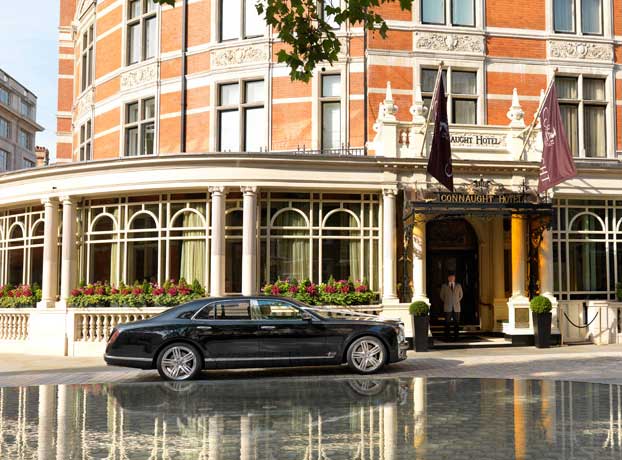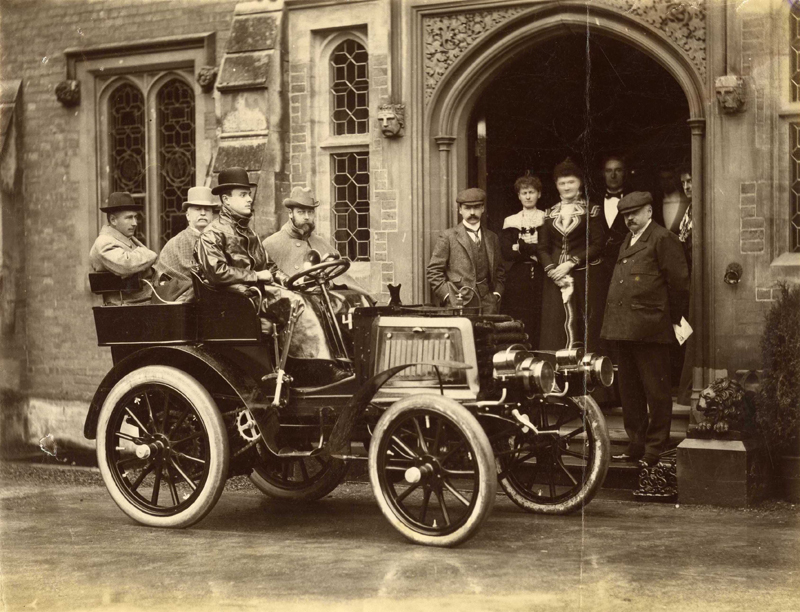London Neighbourhoods
Mayfair

Mayfair is an affluent area in the West End of London towards the east edge of Hyde Park, in the City of Westminster, between Oxford Street, Regent Street, Piccadilly and Park Lane. It is one of the most expensive districts in London and the world. By the end of the 18th century, most of Mayfair was built on with prestigious housing to suit the upper class; unlike some nearby areas of London, it has never lost its affluent status. The decline of the British aristocracy in the early 20th century led to Mayfair becoming more commercial instead of residential, with many former homes converted into offices for major corporate headquarters, embassies and other businesses. There remains a substantial quantity of luxury residential property, upmarket shops and restaurants, and modern hotels along Piccadilly and Park Lane in particular.
Mayfair's prestigious status has been commemorated by being the most expensive property square on the London Monopoly board. At the time the board was being designed in the 1930s, Mayfair still had a significant upper-class residential population.

The Connaught Mayfair
London's May Fair was held every year at Great Brookfield (which is now part of Curzon Street and Shepherd Market) from 1–14 May. It was established during the reign of Edward I in open fields beyond St. James. The fair was recorded as "Saint James's fayer by Westminster" in 1560. In 1686, the fair moved to what is now Mayfair. By the 18th century, it had attracted showmen, jugglers and fencers and numerous fairground attractions. Popular attractions included bare-knuckle fighting, semolina eating contests and women's foot racing. By the reign of George I, the May Fair had fallen into disrepute and was regarded as a public scandal.
Building on Mayfair began in the 1660s on the corner of Piccadilly, and progressed along the north side of that street. The origins of major development began in 167 when Sir Thomas Grosvenor, 3rd Barone, gained 500 acres (200 ha) of land, of which around 100 acres (40 ha) lay south of Oxford Street and east of Park Lane. In 1721, the London Journal reported "the ground upon which the May Fair formerly was held is marked out for a large square, and several fine streets and houses are to be built upon it". Grosvenor Square was planned as the centrepiece of the Mayfair estate. It was laid out around 1725–31 with 51 individual plots for development.
The expansion of Mayfair moved upper class Londoners away from areas such as Covent Garden and Soho, which were already in decline by the 18th century. The requirements of the aristocracy led to stables, coach houses and servants' accommodation being established along the mews running parallel to the streets. Some of the stables have since been converted into garages and offices.
The district is now mainly commercial, with many offices in converted houses and new buildings, including major corporate headquarters, a concentration of hedge funds, real estate businesses and many different embassy offices, namely the U.S.'s large office taking up all the west side of Grosvenor Square. Rents are amongst the highest in London and the world. There remains a substantial quantity of residential property as well as some exclusive shopping and London's largest concentration of luxury hotels and many restaurants. Mayfair is within City of Westminster and bordered by Paddington, St. James's, Belgravia, Fitzrovia, Marylebone, Soho, Westminster, and The West End .
As a neighbourhood steeped in sophistication, Mayfair doesn't have beer pubs and dance clubs - it has wine bars and scotch lounges. Its restaurants are decadent, its buildings impressive, and its streets clean, making Mayfair a sought-after destination for evening strolls. Bounded by iconic Hyde Park to the west and ultra-trendy West End to the east, Mayfair's noble neighbours increase the appeal of its already enchanting endowments. Mayfair is in the heart of the West End and it's no surprise that it's the most expensive street on the London Monopoly board game.

Grand architecture provides the perfect backdrop to Mayfair's glamorous lifestyle. Bond Street is famous for its designer shops. All the big names are here including Chanel, Prada, Miu Miu, Alexander McQueen, and Louis Vuitton. Step back in time at the opulent Burlington Arcade. Burlington Arcade is the epitome of luxury. The historic covered shopping street sells leather goods, jewellery, watches, and fine antiques. Jermyn Street also satisfies cravings for luxury shopping. The Royal Arcade offers yet more chic shopping including bespoke shoes and handmade chocolates.
Mayfair's art galleries, particularly those on Cork Street, have served as the core of London's art world for almost 90 years. The Royal Academy of Arts hosts exhibitions, talks, and other events to promote the visual arts.
Mayfair is dotted with Elegant Squares and magnificent architecture. Grosvenor Square is the home of the American Embassy.
Online Walks

Thinghs to See and Do
Mayfair Address Book
In fiction, Mayfair has featured in a number of novels including, P.G. Wodehouse's, The Mating Season (1949) and Evelyn Waugh's, A Handful of Dust, (1934) and a partial setting for Jane Austen's Sense and Sensibility (1811), Oscar Wilde's The Picture of Dorian Gray, Saki's The Unberable Bassington (1912) and Michael Arlen's The Green Hat (1924). Oscar Wilde lived in Grosvenor Square between 1883 and 1884 and referred to it in his works. He regularly socialised in the artistic quarter along Half Moon Street, which is mentioned in both The Importance of Being Earnest and The Portrait of Dorian Gray.

Berkeley Square, celebrated in the romantic British popular song "A Nightingale Sang in Berkeley Square" is a large leafy square in Mayfair. The song was written in 1939 in the then small French fishing village of Le Lavandou - now a favourite resort for British holidaymakers and second-home owners - shortly before the outbreak of the Second World War. The song features lyrics by Eric Maschwitz and music by Manning Sherwin. The verse and the additional lyrics to a second chorus were in the song as written, but are rarely sung in recordings (those of Bobby Darin, Mel Torme, Blossom Dearie, Twiggy, Vera Lynn and Rod Stewart being notable exceptions). Twiggy's version was featured in an episode ("Fran's Gotta Have It") of The Nanny.

The original Rolls Royce automobile
Pioneer of Motoring and
Aviation Charles Rolls (1877-1910) worked here, 1905-1910. The fourth
man in England ever to own an automobile, Rolls invested in his 3.75hp
Peugeot in 1895, sparking his love affair with the motorcar. Two years
later he became a founder-member of the Automobile Club of Great
Britain and Ireland (later the RAC). To fund his motor racing and
trialling activities, Rolls formed a car sales and service firm in
1902. The foundation of this company led to the famous meeting in
Manchester with the engineer Henry Royce in May 1904, and Rolls
becoming the sole agent for Royce Cars. Rolls-Royce Ltd was formally
incorporated in March 1906. Charles was also interested in aeronautics
and was the first British casualty of the modern age of powered
aviation.

Chocolate manufacturer Cadbury's head office was formerly at No. 25 Berkeley Square in Mayfair. In 2007, Cadbury Schweppes announced that it was moving to Uxbridge in order to cut costs.

Composer George Frederick Handel (1685-1759)
lived here. Handel moved to 25 Brook Street in July 1723, when the
house was newly built, and remained here until his death 36 years
later. It was there that he composed his best-known works, including
the oratorio Messiah (1741) and 'Music for the Royal Fireworks'(1749).
The building is today a museum celebrating the composer's life and
work. The adjoining building (23 Brook Street) was the home of rock
musician Jimi Hendrix (1942-70) in the 1960s, his quarters are today
occupied by part of the George Fredick Handel Museum.
21 Albemarle Street, Mayfair
The Faraday Museum in Albemarle Street occupies a basement laboratory used by Michael Faraday for his experiments with electromagnetic rotation and motors at the Royal Institution. It opened in 1973 and exhibits include the first electric generator designed by Faraday, along with various notes and medals.
Soldier, adminstrator Lord Robert Clive (1725-1774) Clive of India, lived here.
Charles X (1757-1836), last Bourbon King of France lived here 1805-1814.
Manufacturer, reformer and British Politician Sir Robert Peel (1750-1830) and his son Sir Robert
Peel (1788-1850), Prime Minister and founder of the Metropolitan
Police, lived here.

67 Brook Street, Mayfair was the home of Robert Stigwood; manager of the Bee Gees and head of ‘RSO Records’. Stigwood, an Australian by birth, used the exclusive Mayfair address as both his home and office. The Bee Gees spent a considerable amount of time at this address for a period of 12 years between 1968 and 1980. The Bee Gees worked on many of their most famous hits at this address, including tracks for the 1977 film, Saturday Night Fever – indeed, it was at 67 Brook Street that they first met the movie’s lead role, John Travalota. During their time at 67 Brook Street, the Bee Gees also put together their hit 1979 album, Spirits Having Flown which went onto sell over 20 million copies. They also penned the songs, Heartbreaker which was used by Dionne Warwick in 1982, and Chain Reaction, would later prove a successful hit for Diana Ross. A plaque commemorating their stay here was unveiled by band member Robin Gibb himself in May 2008.
Novelist and playwright William Somerset Maugham (1874-1965) lived here 1911-1919.
The Rothschild family owned several Mayfair properties in the 19th century. Alfred de Rothschild lived at No. 1 Seamore Place and held numerous "adoration dinners" where the only guest was a female companion. The marriage of his brother Leopold to Marie Perugia took place here in 1881. The house was demolished after World War I when Curzon Street was extended through the site to meet Park Lane. The future Prime Minister Archibald Primrose, 5th Earl of Rosebery was born in Charles Street, Mayfair in 1847, and grew up in the area.

Mount Street Gardens
Mayfair has had a long association with the United States. Pocahontas is believed to have visited in the early 17th century. In 1786, John Adams established the US Embassy on Grosvenor Square. Theodore Roosevelt was married in Hanover Square and Franklin D. Roosevelt honeymooned in Berkeley Square. A small memorial park in Mount Street Gardens has benches engraved with the names of former American residents and visitors to Mayfair.
Design by W3layouts

